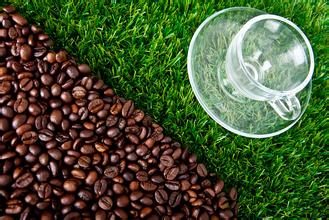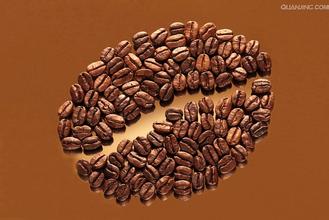Coffee producing area distribution map introduction to the description of the environment and flavor of the planting areas in the five major producing countries
Coffee producing area distribution map introduction to the description of the environment and flavor of the planting areas in the five major producing countries
Unique, mild-tasting coffee. El Salvador is one of the small countries in Central America with a dense population. The flavor of its coffee is characterized by excellent balance. Today, this coffee accounts for 40% of the country's exports. 35% of the extra hard beans of the best coffee are exported to Germany from January to March. In the early 1990s, guerrilla warfare greatly damaged the country's national economy, reducing coffee production from 3.5 million bags in the early 1970s to 2.5 million bags in 1990-1991. The eastern part of the country was most affected by guerrilla warfare, and many farmers and workers were forced to leave the manor. The shortage of funds has led to a sharp drop in coffee production, from 1200 kg per hectare in the past to less than 900kg per hectare today. In addition, the government imposed an additional 15% tariff on exported coffee in 1986, that is, an additional 15% in addition to the existing 30% tax. Taxes, together with unfavorable exchange rates, have greatly reduced the export of coffee and the quality of coffee. The government finally realized the great role of coffee in the national economy, such as solving employment, earning foreign exchange and developing agriculture, so it privatized some coffee export industries in 1990, hoping to increase the income rate of coffee in the export market. In Cuscacbapa, El Salvador, packaged coffee beans are about to be exported to El Salvador. Coffee from El Salvador is a specialty of Central America, where it is light, aromatic, pure and slightly sour. Like Guatemala and Costa Rica, coffee in El Salvador is graded according to altitude, and the higher the altitude, the better the coffee. The best brand is Pipil, which is Azbec-Mayan.
01. Costa Rica 02. Cuba 03. Dominican Republic 04. El Salvador 05. Guadeloupe 06. Guatemala 07. Haiti 08. Honduras 09. Jamaica 10. Martinique 11. Mexico 12. Nicaragua 13. Panama 14. Puerto Rico 15. Bolivia 16. Brazil 17. Colombia 18. Ecuador 19. Balapagos Islands 20. Peru 21. Suriname 22. Venezuela 23. Angola 24. Burundi 25. Kemuron 26. Ethiopia 27. Ivory Coast 28. Kennier 29. Madagascar 30. Mozambique 31. Rwanda 32. Blame Heller for taking 33. Strange many United States and Principe 34. South Africa 35. Sudan 36. Tanzania 37. Uganda 38. Yemen 39. Zaire 40. Zambia 41. Zinbab is 42. China 43. India 44. Indonesia 45. Reunion 46. Philippines 47. Taiwan 48. Vietnam 49. Australia 50. Hawaii 51. New Caledonia 52. Papua New Guinea 53. The coffee production site in Tahiti shows that coffee beans grow in tropical or subtropical agricultural gardens in tropical or subtropical countries with the equator as the center. Because their growth requires direct sunlight, abundant rainfall and high temperatures are located between the Tropic of Cancer and the Tropic of Cancer. The original varieties of coffee can be roughly divided into three categories: Arabica, Robusta and Leberica. At present, the coffee consumed in the market is Elaraby plus coffee, accounting for more than 85% of the total, followed by Romes plus seed, while Libi plus seed is seldom drunk because of its poor quality.

Important Notice :
前街咖啡 FrontStreet Coffee has moved to new addredd:
FrontStreet Coffee Address: 315,Donghua East Road,GuangZhou
Tel:020 38364473
- Prev

Coffee automatic grinder grinding scale bigger powder finer?- Hand coffee grinder
Coffee automatic grinder grinding scale bigger powder finer?- Hand-cranked coffee bean grinder can control the thickness of bitterness is a good way to control bitterness, because the finer the grinding, the higher the extraction rate, the easier it is to extract high molecular weight astringent substances such as chlorogenic acid, quinic acid, caffeine and carbide. On the contrary, grinding too coarse, the lower the extraction rate, the more difficult it is to extract high molecular weight astringent substances, but
- Next

Introduction to the taste of coffee varieties with different roasting degree and grinding scale
The difference between the price of coffee beans and mother beans the degree of roasting and grinding scale varieties taste introduction of the Peaberry on the market at present, the more famous is Kona. This is an Arabian bean (Arabica) grown in Hawaii, with an average of only 5 Peaberry per 100. it is very precious. Some coffee fans think that the strong aroma of Peaberry is better, and because it is rare, each passing person
Related
- What brand of black coffee is the most authentic and delicious? what are the characteristics of the flavor of the authentic Rose Summer Black Coffee?
- Introduction to the principle and characteristics of the correct use of mocha pot A detailed course of mocha pot brewing coffee is described in five steps.
- Which is better, decaf or regular coffee? how is decaf made?
- How much is a bag of four cat coffee?
- How about four Cat Coffee or Nestle Coffee? why is it a cheap scam?
- Which is better, Yunnan four Cats Coffee or Nestle Coffee? How about cat coffee? is it a fake scam? why is it so cheap?
- How about Cat Coffee? what grade is a hoax? which instant coffee tastes better, four Cat Coffee, Nestle Coffee or G7 coffee?
- Process flow chart of coffee making-Starbucks coffee making process what coffee tastes good at Starbucks
- The top ten best coffee beans in the world Rose summer coffee or Tanzanian coffee tastes good
- Yunnan four cat coffee is good to drink?_four cat coffee is a big brand? four cat blue mountain coffee is fake?

